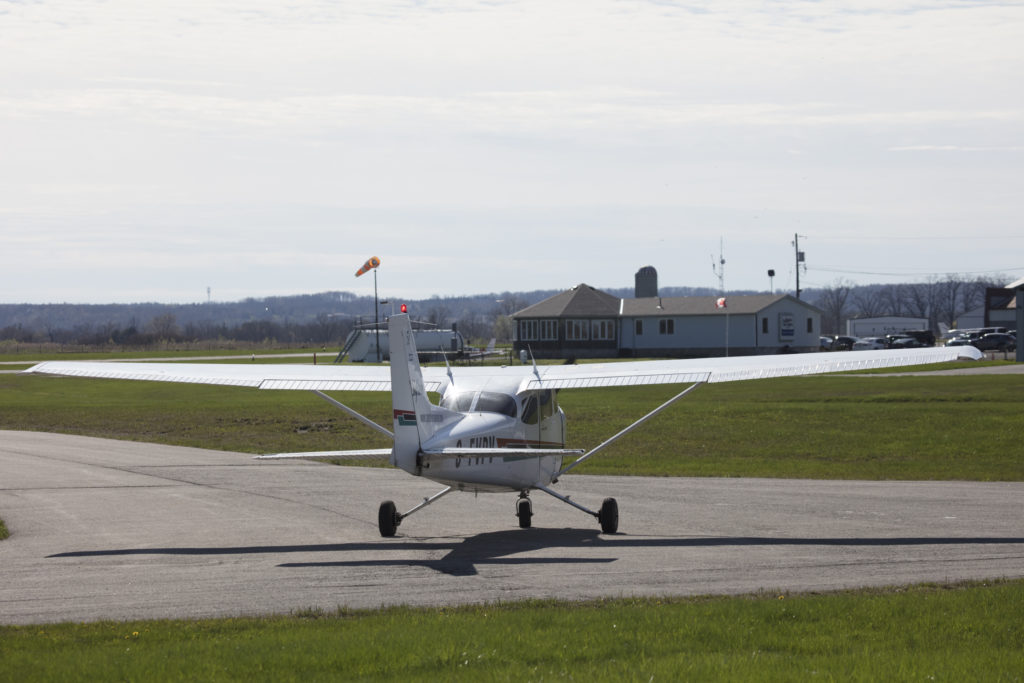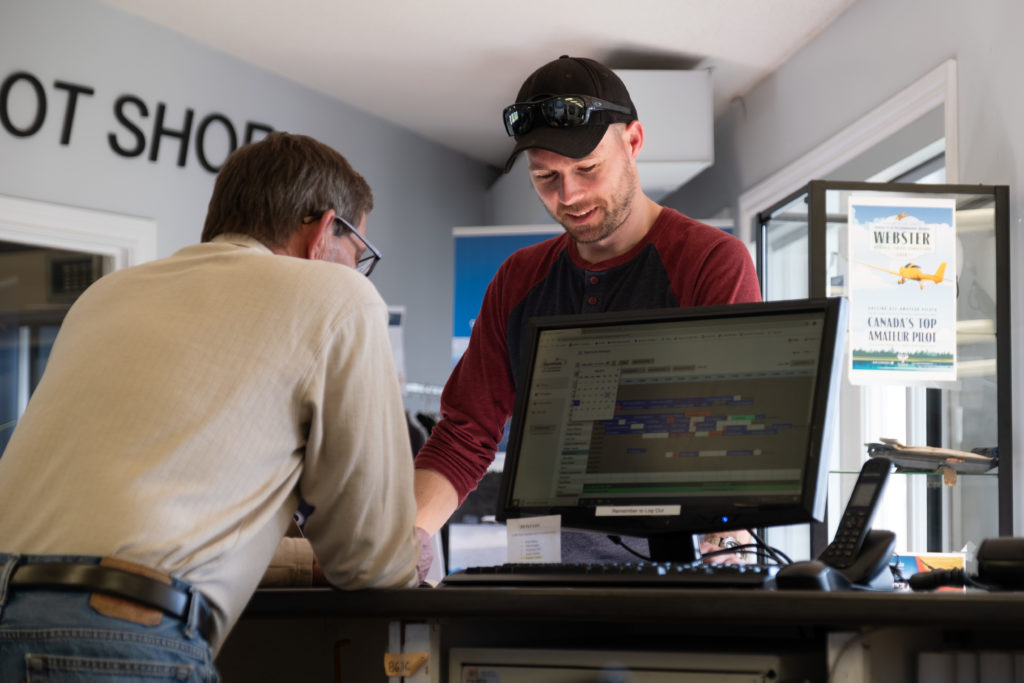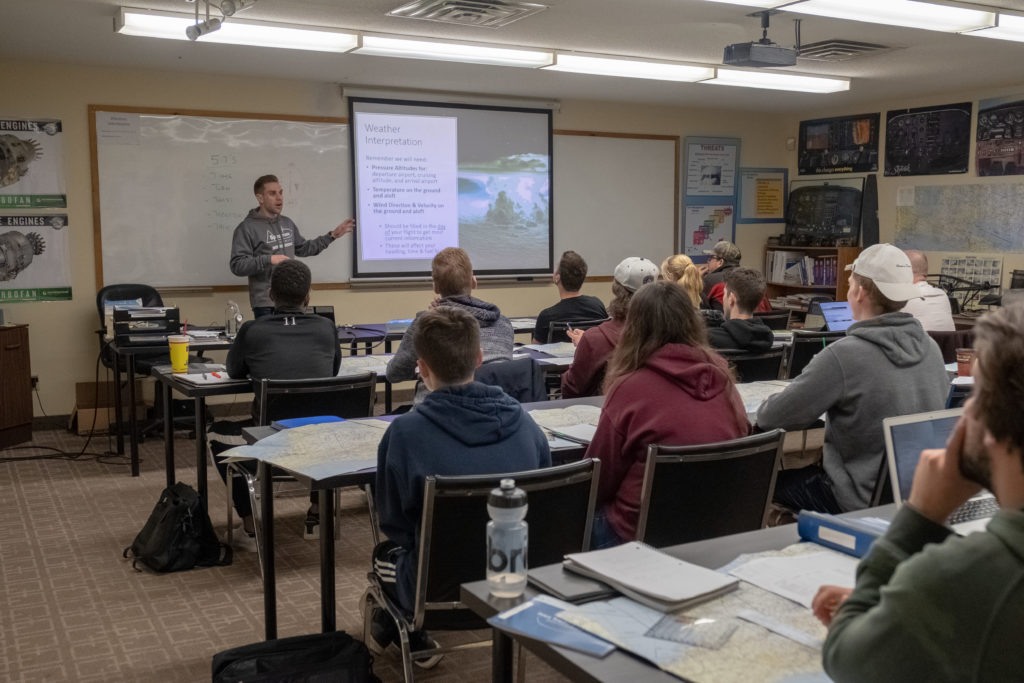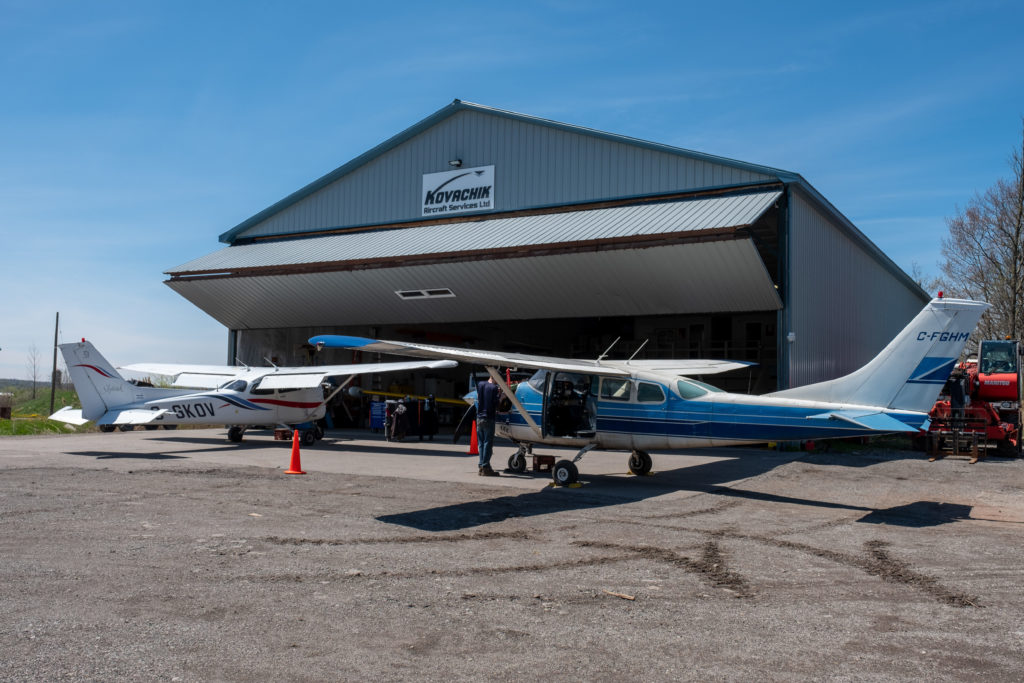Estimated reading time 17 minutes, 8 seconds.
Tucked away in the countryside between Toronto and Hamilton is busy Burlington Airpark (CZBA), a privately-operated airport founded by Victor Kovachik in 1962.

Kovachik, an aircraft maintenance engineer (AME) who was working at Orenda Engines Limited in nearby Malton, Ont., bought a 144-acre parcel of land on Bell School Line and built a grass runway and a hangar.
As the saying goes, once it was built, they started coming.
Small aircraft would fly into the approved maintenance organization (AMO) for service. By 1967, Kovachik Aircraft Services was so busy that its founder quit his day job and hired an apprentice to help him out.
That apprentice, Vern Stutt, would go on to serve Kovachik Aircraft Services for half a century, retiring just two years ago in 2017. As the company’s first full-time employee, he saw a lot of change through his five decades at CZBA.
All in the family
From the moment it was founded, Burlington Airpark has been a family affair. Founder Vic Kovachik passed the reigns along to son Paul; he in turn ceded the managerial role to his son, Chris, who is the current president.
Over the past 57 years, change has left its mark on the airfield.

The AMO grew steadily. The year 1982 was a big one for Burlington Airpark, as the runway – which was originally on the northwest side of the airport near the maintenance facility – was moved to the present-day location of Runway 14/32.
That same year, Kovachik Aircraft Services took over the small flying school that had been operating at the airfield. It was rebranded Spectrum Airways and managed by Paul Kovachik, also an AME and a private pilot.
Today, Kovachik Aircraft Services is a busy AMO, operating from 40,000 square feet of total hangar space at CZBA, which includes two maintenance buildings plus a hangar for the Spectrum Airways aircraft it maintains.
Burlington Airpark itself is home to 150 hangars that house a variety of private and commercial operators. Traffic at the airfield is steady and includes medevac flights, charters and flight school activity.

Running at capacity
From its early days as a “mom and pop” recreational flying school, Spectrum Airways has cultivated careful, measured growth. Today, it employs 16 flight instructors and operates a fleet of 13 aircraft, including three Cessna 152s, five Cessna 172s, four Piper PA-28 Warriors, and a twin-engine Piper PA-34 Seneca. Last year, the combined fleet flew a total of 14,000 hours.
Seven years ago, Spectrum also purchased a Redbird FMX1000 “full motion experience” simulator, which can be configured for three kinds of aircraft: a Cessna 172R, a Piper Seneca II, and a Beech Baron with Garmin G1000 glass cockpit. The device has been approved by Transport Canada for use during instrument proficiency checks (IPCs).
Lastly, the school offers a Precision Flight Controls Cirrus II desktop trainer that is used for instrument procedure practice.
Spectrum’s 3,000 square feet of office space includes a 22-seat groundschool classroom that is full each time a new class begins.
General manager John Gioseffi said Spectrum offers everything from recreational pilot permit training to commercial pilot licence, multi-engine instrument, VFR over-the-top, night ratings and instructor ratings.
Currently, the school is training about 90 active commercial students, with a total of 930 customers in its online booking system, which includes recreational renters.
As a registered private career college and a designated learning institution with Immigration Canada, Spectrum also attracts a fair number of foreign students.
“We have about 25 active foreign students, and that number is growing every day,” said John Gioseffi, the school’s general manager. “We are a designated learning institution, so we are one of the flight schools that is able to accept foreign students.”
Most of those students come from India, China, the U.K., Nigeria and the Caribbean. Currently, Spectrum trains them on an ad hoc basis, meaning there are no structured intakes for foreign students.
The school’s rural location and the lack of public transit do pose some logistical challenges, although the school has made local homestay arrangements. But still, students keep coming.
“It’s tough to pre-plan foreign classes as a smaller organization,” admitted Chris Kovachik, president and owner. “We are already at capacity as far as airplanes and students go.”
In 2018, Spectrum enrolled 33 new students in the first three months of the year. In the same time period this year, the school accepted 79 new students. Increasingly, more of them are women.
Chief pilot and chief flight instructor Dennis Simo said that despite its significant growth, the school has managed to avoid implementing a waiting list – so far.
“One of the reports from the last ATAC [Air Transport Association of Canada annual conference] was how many flight schools have waiting lists and how long those lists are,” he told Skies. “One of the worries of the waiting list concept to me is that there will be a lot of potentially good students buried somewhere deep inside that list. They might get frustrated and go somewhere else.”
Kovachik agreed that the focus is on keeping good students engaged.
“We’re trying to avoid a waiting list and have other ways to vet the students,” he commented. “We want to keep the people who are engaged and active, but vet out the ones who are not committed. So, we’re moving away from mom and pop to a more professional orientation.”

Fielding the farm team
Spectrum Airways has a vested interest in encouraging the best students. The school typically hires about 60 per cent of its instructor rating graduates. In today’s tight labour market where flight instructors are scarce, “growing your own” helps schools survive.
“As an organization, we’re not just looking at them as customers,” said Kovachik. “We’re looking at them as potential employees as well. Four years ago, we decided that instead of doing an outside hire, we would do our best to hire the people we’re bringing through. They come on as ramp and desk staff, and then through as instructors. Some are even bonded for 22 months; in exchange for the bond we cover the costs of the instructor rating.”
Sometimes, an older person looking for a career change is the best candidate for an instructor rating, and Spectrum hones in on those individuals.
“We’re trying to get people to do this as a second career,” said Simo, who has been flying out of CZBA since 1984. “We are targeting older people who have retired from other sectors. They enjoy flying and love to teach.”
While Class IV instructors are still trickling through the pipeline, Class I and II instructors are a rare breed these days – but you can’t run a flight school without one.
“Our hope with these career instructors is that they will over time move up to higher classes,” continued Simo. “It’s important to have them because they can supervise the Class IVs.”
While it’s difficult to find and keep good flight instructors – who these days are enticed away by larger operators – Kovachik said it’s also exciting because the industry is moving faster than ever.
“New people are coming through the door. We just have to find a way to manage that turnover. We’re like a farm team – we know people are going to move on. So, we want to provide them with a good environment where they want to be, and keep them as long as possible.”
It’s the same over at the AMO, where Kovachik Aircraft Services is also feeling the pinch of a tight labour market.
“I’m an AME; the pilot shortage doesn’t even touch the pending AME shortage,” said Kovachik. “You’re not seeing the grads come out of the schools any more. We have to pay more for AMEs to come in; then our rates have to go up.”
Like the flying school, the maintenance operation aims to grow its own apprentices. Kovachik admits he’s learned how important it is to keep good people happy.
“You have to be proactive with that now.”
It’s hard for smaller operations to compete with the airlines, so both the flying school and the maintenance shop have had to be creative.
“We offer flexible shift hours in addition to money. Our maintenance department is busy. If you like a challenge, we can offer that,” said Kovachik.
Simo added that Spectrum’s professional yet casual environment is appealing and staff enjoy coming to work.

Bearing the burden
Ultimately, said Kovachik, the federal government recognizes the pilot and AME shortage and needs to do something about it.
“We’re not looking for a handout, but everyone needs to get on the same page.”
Simo agreed, adding that if flight training were on par with every other type of educational process, it would be helpful.
“A small flight school isn’t the big presence; aviation doesn’t have that same sort of public attachment as being a doctor, lawyer or engineer,” he said.
With limited staffing resources, Spectrum feels the weight of the regulatory burden it must bear. Not only must it comply with Transport Canada regulations, but it also needs to jump through significant hoops to maintain its status as a private career college.
“You need to do a lot of paperwork. When you’re one person in a small business trying to do all that, it’s really difficult,” said Gioseffi.
It’s an added requirement that translates into higher fees for customers, added Kovachik.
“When people ask why we have to raise rates, that’s why. We pay $30,000 a year in accounting fees. There are follow-on effects, too.”
Aside from regulations, the booming training market has presented other hurdles. New training aircraft are expensive and good used options are scarce. Recently, Spectrum bought one that needs work and tasked Kovachik Aircraft Services with bringing it up to par.
“All the flight schools say they can’t keep up with domestic demand,” Gioseffi stated. “We need airplanes, instructors, AMEs. We can’t get airplanes because the prices are astronomical; so, as a small business, how do you afford to purchase that airplane? You look to leasing, but then you’re cutting into your margins. We need to get the banks on board to provide funding. There’s a lot that needs to change.”

Planning for the future
Spectrum Airways and Kovachik Aircraft Services will always subscribe to the steady growth plan that has served them well.
“We grow organically at a measured pace,” said Simo. “The big problem here is the ability to react quickly. You can’t just get more instructors, more airplanes all of a sudden. Even this office – we sometimes need more space.”
With the demand for maintenance services increasing, Chris Kovachik seized the opportunity for expansion in 2018, when he purchased Lawrence Aero at the Parry Sound Area Municipal Airport (CNK4). The new satellite base offers full maintenance services for land- and water-based aircraft.
Over the summer months, any Spectrum Airways aircraft that need major repairs will have the work done at the 7,000-square-foot Parry Sound facility.
Down the road, Kovachik – who has already moved his family to Muskoka and commutes back to Burlington as needed – hasn’t ruled out establishing a school up north.
“We’re exploring the options,” he said. “Can we move? The municipality is more supportive. It opens the doors to take on maybe more international students and house them, etc.”
Gioseffi said Spectrum is not losing sight of international markets.
“Aviation is affected by recessions and the financial outlook of the country,” he commented. “If that turns, the international markets seem to provide a steady influx of students. One of the things we can look at is moving to an integrated program, and offering that with a college tie-up.”
Meanwhile, the school is trying to tap into the domestic market by educating local high school students and guidance counsellors about aviation careers.
“My personal peeve is we haven’t done enough to encourage the local domestic market,” said Simo. “I think there is a lot of untapped capacity out there. This is an industry that has a real cool factor to it, but nobody talks about it.”
Simo, who originally dreamed of becoming an airline pilot, said that in hindsight, flight training is more rewarding.
“This job is never the same,” he said. “Every day is different. I live seven minutes up the road from here, and the one thing I’ve noticed is that ever since I’ve gotten involved in aviation, I’ve never needed an alarm clock. I’ve never slept in for anything involving aviation.
“Facilitating peoples’ dreams is very cool.”









For Paul Kovachic, if Chris gets this please pass it on to your father, I use to fly out of Spectrum Airways many moons ago and I am trying to find out about a fellow by the name of Rick Gray (Richard) who at one time built an aircraft and had it parked at the Burlington Airpark, do you happen to know where I might find a contact for him for him, thanks.
Best regards
Dave